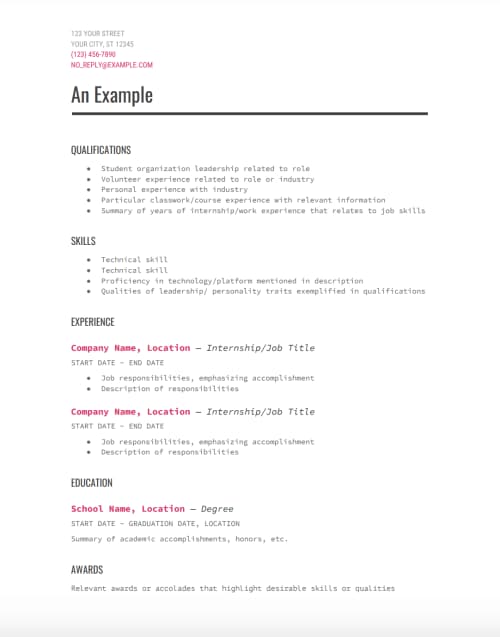The 5 Types of Job Seekers Who Should Use a Hybrid Resume
When applying for a job, your resume is your first opportunity to make an impression. Marketing yourself well on that single piece of paper is essential if you want to stand out from the pile and move on to the next step in the interview process. When composing your resume, you have to make several decisions about the diction, skills and content you will include. You also have to consider how best to format that content for the job you're applying to.
There are a couple of common resume formats that are most popular — the functional resume and the reverse chronological resume. Each has its own advantages and purpose, but sometimes you have the need for elements of both. This is where the hybrid resume, or combination resume, comes in. It combines elements of the two most popular resume styles into one format that, if done correctly, can showcase your skills, experience and versatility and lead to success.
What's a hybrid resume?
A hybrid resume is a template that combines aspects of both the functional resume — which highlights professional skills and accomplishments over work experience — and the reverse chronological resume, which prioritizes portraying the timeline of your work history.
The hybrid resume satisfies the need for both elements, creating a balance of skills and assets while including a timeline of employment. It's beneficial mainly for the versatility it offers to showcase your pertinent skills and qualifications, departing from the rigidity of the (perhaps more traditional) reverse chronological resume. Hybrid resumes are thus sometimes considered the most attractive resume format; but the choice of whether or not to use one ultimately depends on you, your qualifications and the job you're working toward.
How do you write a hybrid resume?
There are a few key components to a hybrid resume. Here's how to write one.
Summarize skills and qualifications.
Most hybrid resumes are headed with a summary of your skills and qualifications. These can be broken up in two separate subheadings and should mention your most relevant assets for the job. This allows you to articulate a qualification outside of your work experience. Perhaps the job description mentions a skill or responsibility you're directly qualified to handle, but that fact isn't portrayed through your work experience. Your summary of skills and qualifications should highlight what makes you the right person for the job that people might not realize simply by scanning your work history.
Include a timeline of work experience.
Under your summary of skills and qualifications, include a reverse-order timeline of your work experience. Each position should include dates, employer and a bullet-point summary of your responsibilities there. The timeline serves to give employers an idea of the practical experience you're bringing with you to the role. Framed by your skills and qualifications, they can ideally form a holistic picture of where you are headed and what you bring to the table.
List your training and education.
As on all other forms of resumes, you should list your relevant training and education for the job. This includes any certificates, degrees or workshops that highlight your expertise and background.
Who should use a hybrid resume?
Hybrid resumes aren't for everyone. When choosing whether or not to use one for an application, you should first take into account the culture of the employer you're applying to. If they are more traditional, for example, a hybrid resume may not be as common or expected as a reverse-chronological resume. Hybrid resumes could be seen as less straightforward or professional depending on the level of the job you're applying to as well.
In terms of who benefits most from a hybrid resume, the people most likely to opt for and find success with the format are those with minimal or less-relevant work experience. Hybrid resumes allow people with insufficient practical experience on paper to highlight the fact that they have the qualifications and skills required to do the job effectively, even though they may not have been hired for a similar job before — people like:
- Students and recent graduates
- People who are changing careers
- People with diverse work experience that isn't as streamlined as someone with cohesive experience in one industry
- Older workers
- People re-entering the workforce
People in each of these situations have something to gain from a format that allows you to qualify your capabilities and skills outside of your responsibilities and accomplishments within past positions. It enables you to bring in past volunteer work, participation in organizations and clubs, transitional experience in unrelated fields and sheer personality traits and strengths that make you a valuable candidate. Hybrid resumes are helpful for breaking into an industry or the workforce in general for people who haven't yet been hired in the kinds of roles they want but know they have what it takes to get that first "yes."
Examples.
To get you ready to write your own hybrid resume, here are a couple of examples — one from a recent graduate and one from a person looking for a career change.
1.

2.

Key takeaways:
- A hybrid resume blends the functional and reverse chronological resume to balance your skills and qualifications with your timeline of employment.
- Key components of the hybrid resume include a summary of your skills, a timeline of your work experience and your training and education.
- While not everyone will benefit from a hybrid resume, students, recent graduates, career-changes, people with unique and diverse work experience, older workers and people re-entering the workforce can.
Browse jobs at companies women love on FGB.
Why women love us:
- Daily articles on career topics
- Jobs at companies dedicated to hiring more women
- Advice and support from an authentic community
- Events that help you level up in your career
- Free membership, always
